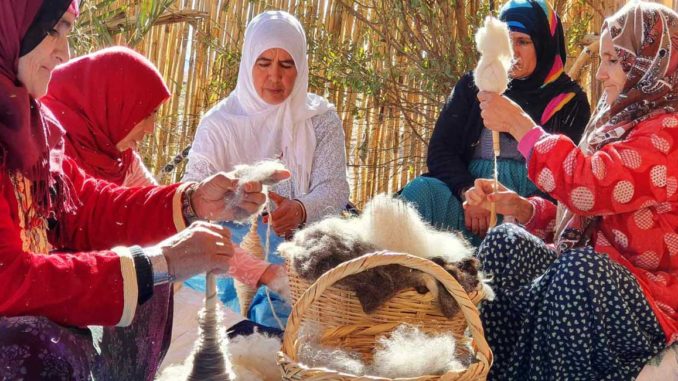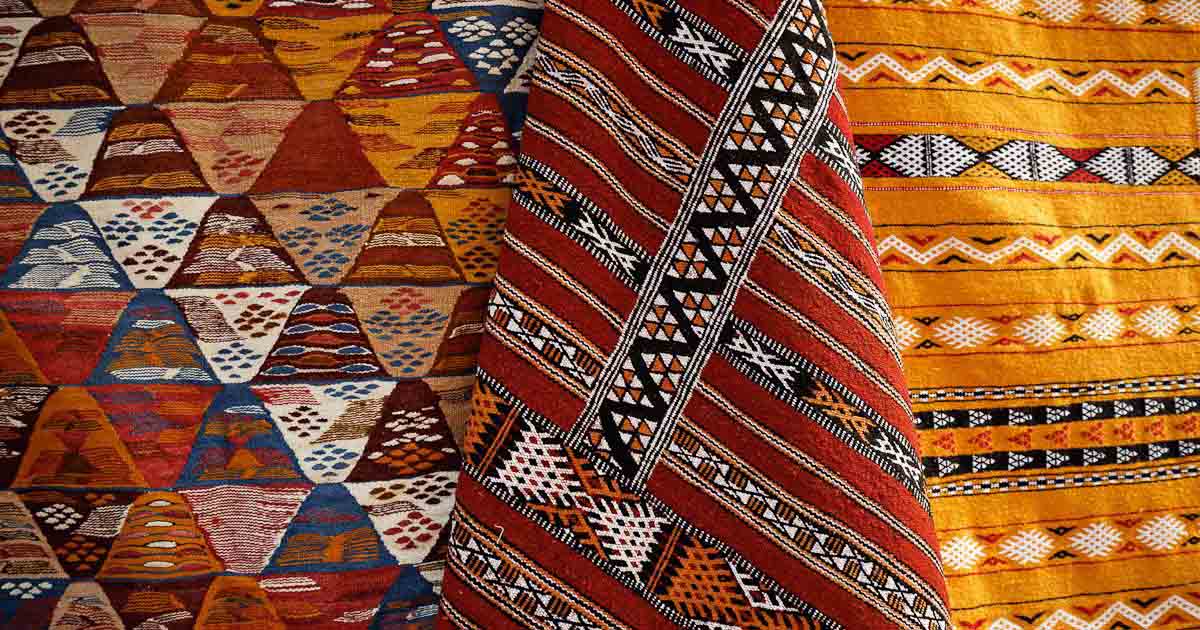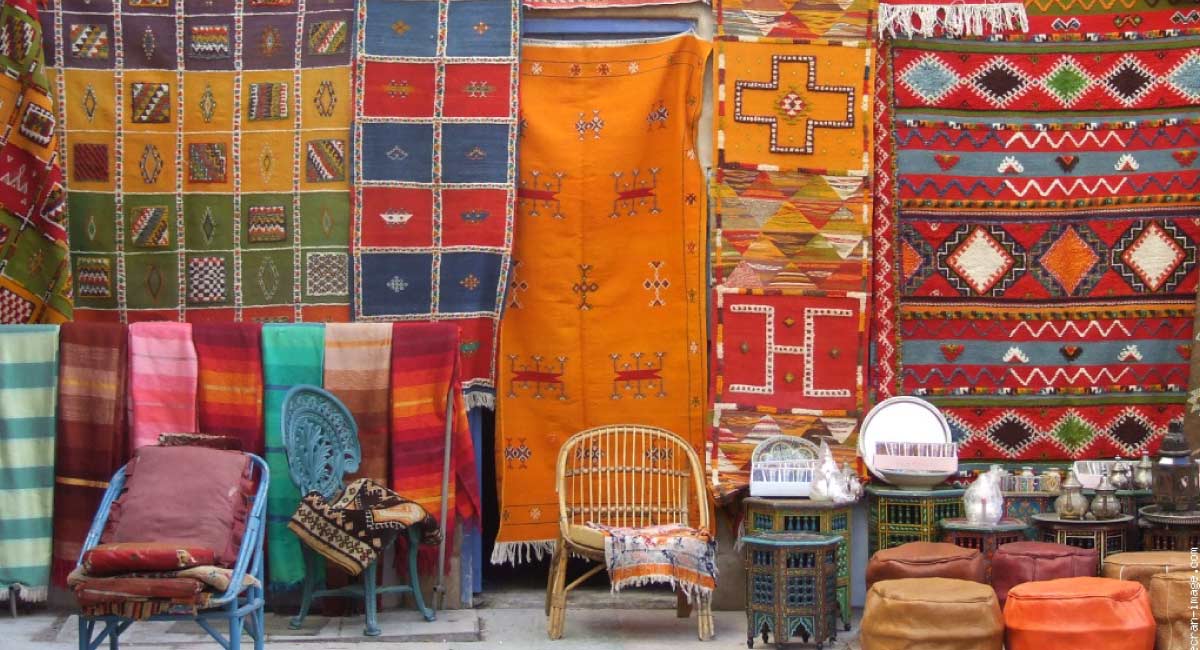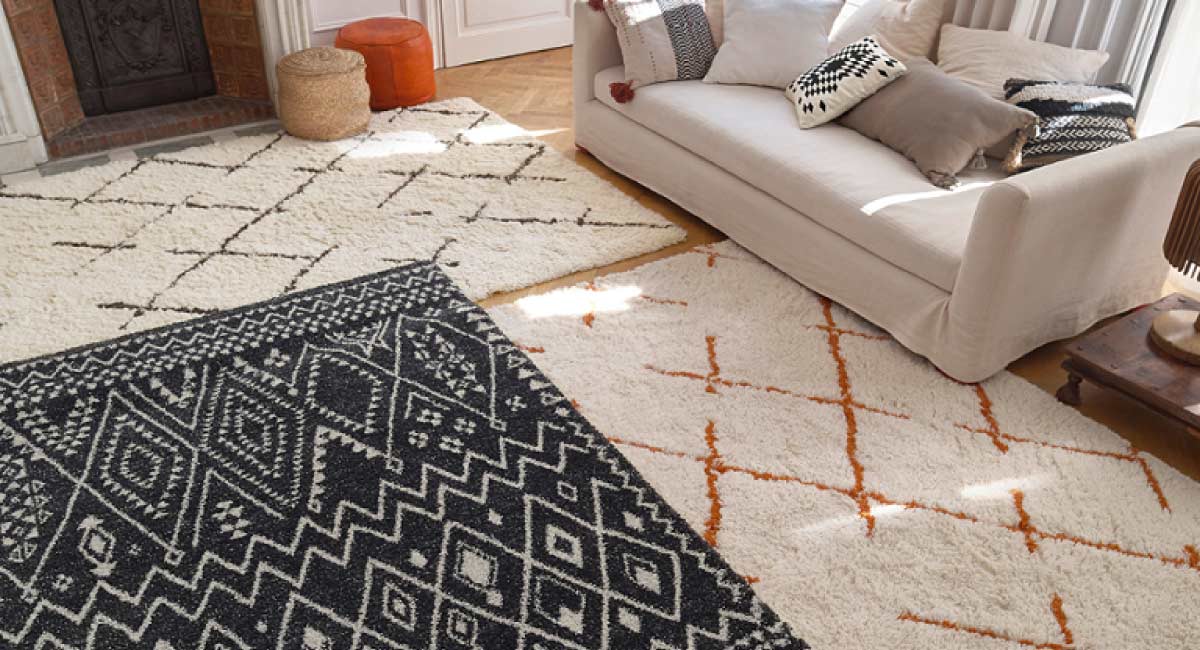
The art of the carpet expresses itself in Morocco in the expert hands of women and forms a constituent element of the identity of the country, its culture and its know-how.
The practice of carpet weaving dates back to nearly 2,200 years ago and is said to have originated in rural communities in the Middle Atlas Mountains and around Marrakech. At that time, these populations were nomadic. The women therefore took advantage of each stopover to make the fabrics of mattresses and blankets, with the wool of the animals of their herd, sheep or goats.
Proud of their freedom, these craftswomen never used a model. They wove according to their own inspiration, making each carpet a unique creation.
The weaving of the imagination of Berber women
These carpets present themselves as a mirror of the inner world of Berber women, as books filled with signs and symbols that make us travel through time. One finds there indeed the characteristic patterns of rock art and primitive artefacts of our humanity.
Other signs are reminiscent of motifs found in Europe during prehistory or in the East and elsewhere around the Mediterranean. A whole geometrical language tells us about women's bodies or sexual organs echoing the permanent wish for fertility. The woman weaver speaks of herself in her virginity, her position as a wife, her pregnancy and her childbirth.

The carpets from the High and Middle Atlas regions, once finished, would reach Marrakech to be auctioned to bazaar owners.
During the French Protectorate, there was an ambitious policy of preservation and encouragement of the art of Berber carpets in Morocco. A Service of Moroccan Crafts and Arts is established, a craft and commercial label is created and cooperatives are set up.
The carpet affirms the identity of the Berber tribes
The Amazigh carpet differs according to the tribes where it is made. The carpets of the confederation of the Ait Ouaouzguite tribes, in the region of Taznakhte, near Ouarzazate, are the best known. We find the Glaoua carpet of the High Atlas regions, the carpets of the Middle Atlas, called Achdif, around Meknes and Rabat with the Zemmour or Zayane tribes, and finally, the rural carpet of the Haouz of Marrakech.
All these priceless treasures can be admired in all the shops of the old Medina of Marrakech.
They are nowadays the beautiful days of decoration all over the world and can be found in all interiors, on all continents.
For a good overview of the know-how of Marrakech craftsmen, many websites allow to admire and also to acquire them. Here is the one we recommend: MARRAKINE



Leave a Reply